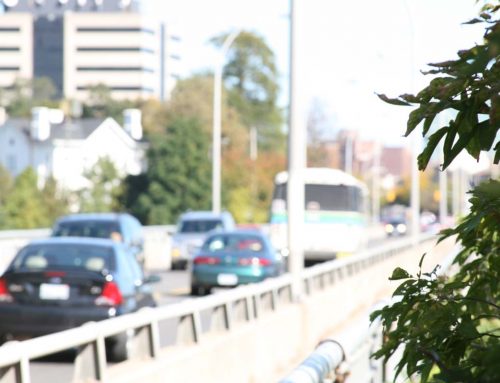[button_link style=”green large” url=”https://www.livinginniagarareport.com/wp-content/uploads/Living-In-Niagara-report-2011-Transportation-and-Mobility-in-Niagara.pdf”]Click here to download a PDF of the summary version of this sector.[/button_link]
Niagara’s assets can only be leveraged if transportation within municipalities, between municipalities and beyond the region’s borders is possible. It is important to be able to move from one place to another to work, learn, live, play, visit, volunteer, shop and access services. To have available and accessible modes of transportation to get around with ease, at an affordable cost and with low impact on the environment will contribute to positive living in Niagara. Transportation impacts the economy as resources, goods and people move within and through Niagara; the sector is also important to employment and economic sustainability.
What we are doing well…
This region’s citizens continue to use the automobile as the most-reported mode of transportation. The fact remains that Niagara covers a large geographic area – 1, 852 square miles and 12 municipalities, including a rural and urban mix of: 5 cities, 5 towns, 2 townships and 5 international border crossings, 4 by road and 1 by rail. Niagara Region offers transit bus lines within each major city and connections to Brock University and Niagara College. Niagara has excellent walking trails in designated municipal areas and on the Niagara portion of the Bruce Trail. There are 522 km of cycling networks along the Niagara River and the Welland Canal, as well as a growing number of bicycle lanes. The Niagara Specialized Transit system has been operating since 2007; its use is increasing for access to medical care, employment and education. We are located close to international airports: Toronto, Buffalo and Hamilton. Vessels travel through the Welland Canal with lake to lake and international connections.
By working together, we can improve transportation and mobility in Niagara
Niagara covers a large geographic area and public transportation exists mostly within cities, with limited weekend and evening routes. Niagara is not well-connected with public transportation between cities and towns, especially for those who have special mobility challenges and those with a low income. Region-wide transportation services have been identified as a priority and a regional Transportation Committee is working toward this goal. Services, including some in the area of health care are becoming more centralized, and this poses a challenge of access for some citizens. Reliable, affordable transportation is required for citizens to have full access to the excellent cultural and recreational offerings in the region. Getting to work and to school can be a challenge, especially for those without cars or with low wages; increasing fuel prices are also a concern. Peak times of the year and day create congestion on major roads in the region. Long-term capacity expansion planning for transportation links between Niagara and the GTA will benefit Niagara’s economic future.
Emerging Activity
- GO Transit service has been expanded to Niagara Falls and St. Catharines, with improved travel connections to Toronto.
- Niagara Region Transit has invested $3.7 million to pilot inter-municipal bus lines beginning in the fall of 2011.
- The Province (MTO) continues to study all modal options to add capacity to the transportation systems linking Niagara to the GTA.
- The Regional Niagara Transportation Strategy is currently being reviewed and updated.
Suggested Action Steps
that emerged from the data, and discussions with community expert opinion leaders:
- Continue to develop the Regional Niagara Transportation Strategy with a focus on accessibility and options for public transportation linkages across Niagara.
- Fine-tune the inter-municipal transportation system for students to better reflect their variant study schedules.
- Minimize costs of transportation for citizens to get around Niagara.
- Support long-term transportation capacity planning.
[call_to_action title=”Expert Opinion Leader Rating” tag_line=”A lot of progress being made.” button=”3b” link=”JavaScript:alert(‘A lot of progress being made.’);”]








